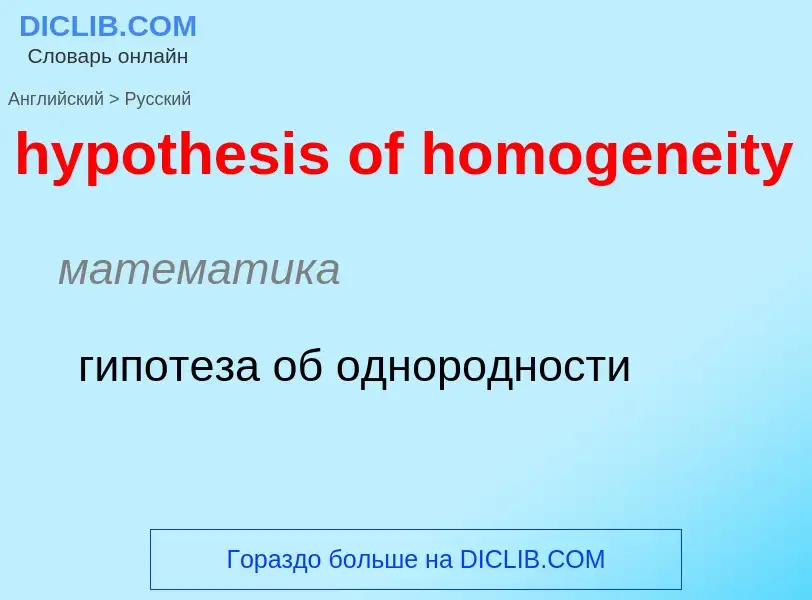ترجمة وتحليل الكلمات عن طريق الذكاء الاصطناعي ChatGPT
في هذه الصفحة يمكنك الحصول على تحليل مفصل لكلمة أو عبارة باستخدام أفضل تقنيات الذكاء الاصطناعي المتوفرة اليوم:
- كيف يتم استخدام الكلمة في اللغة
- تردد الكلمة
- ما إذا كانت الكلمة تستخدم في كثير من الأحيان في اللغة المنطوقة أو المكتوبة
- خيارات الترجمة إلى الروسية أو الإسبانية، على التوالي
- أمثلة على استخدام الكلمة (عدة عبارات مع الترجمة)
- أصل الكلمة
hypothesis of homogeneity - ترجمة إلى الروسية
математика
гипотеза об однородности
[həmɔdʒinai'zeiʃ(ə)n]
общая лексика
гомогенизация
усреднение
существительное
специальный термин
гомогенизация
تعريف
.
ويكيبيديا

The Armenian hypothesis, also known as the Near Eastern model, is a theory of the Proto-Indo-European homeland, initially proposed by linguists Tamaz V. Gamkrelidze and Vyacheslav Ivanov in the early 1980s, which suggests that the Proto-Indo-European language was spoken during the 5th–4th millennia BC in "eastern Anatolia, the southern Caucasus, and northern Mesopotamia".
Recent ancient DNA research has led to renewed suggestions of a Caucasian homeland for a 'pre-proto-Indo-European'. Particularly, an admixture between the Khvalynsk and Caucasian Copper Age burials gave rise to the ancestry that later became known as a typical marker (WSH - Western Steppe Herders) of the Yamnaya pastoralists. It also lends support to the Indo-Hittite hypothesis, according to which both proto-Anatolian and proto-Indo-European split-off from a common mother language "no later than the 4th millennium BCE." These suggestions have been disputed in other recent research, which still locates the origin of the ancestor of proto-Indo-European in the Eastern European/Eurasian steppe or from a hybridization of both steppe and Northwest-Caucasian languages. The origin of the Anatolian languages according to the Near Eastern model has also been challenged because "[a]mong comparative linguists, a Balkan route for the introduction of Anatolian IE is generally considered more likely than a passage through the Caucasus, due, for example, to greater Anatolian IE presence and language diversity in the west."


![[[Edward Sapir]] [[Edward Sapir]]](https://commons.wikimedia.org/wiki/Special:FilePath/Edward Sapir.jpg?width=200)
![[[Franz Boas]] [[Franz Boas]]](https://commons.wikimedia.org/wiki/Special:FilePath/FranzBoas.jpg?width=200)

![[[Wilhelm von Humboldt]] [[Wilhelm von Humboldt]]](https://commons.wikimedia.org/wiki/Special:FilePath/WilhelmvonHumboldt.jpg?width=200)
